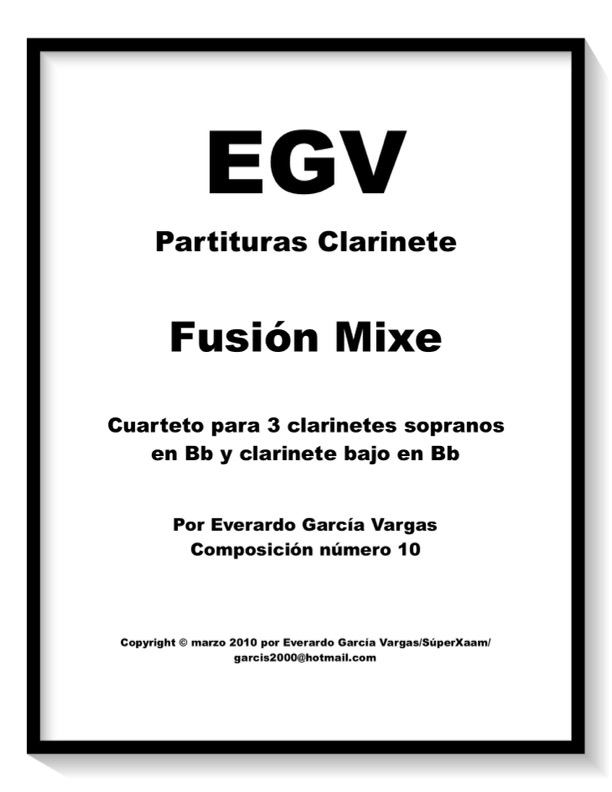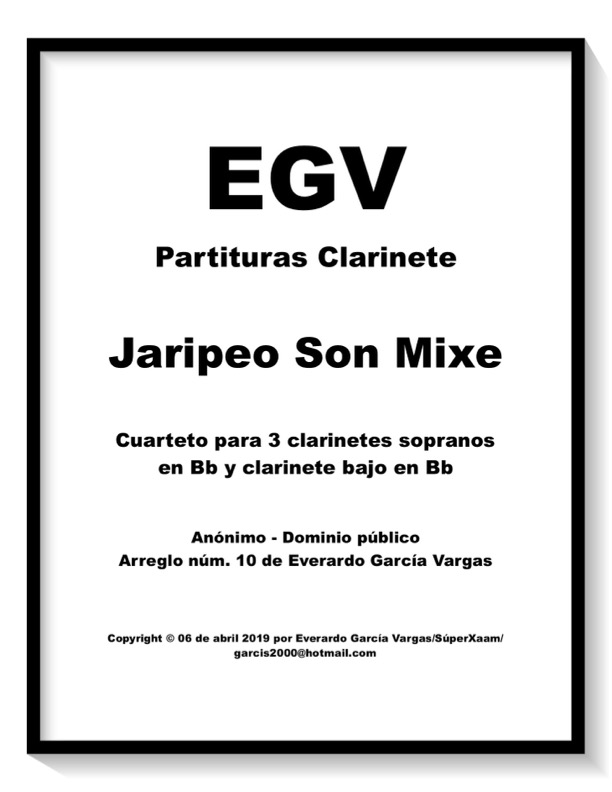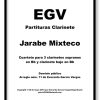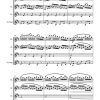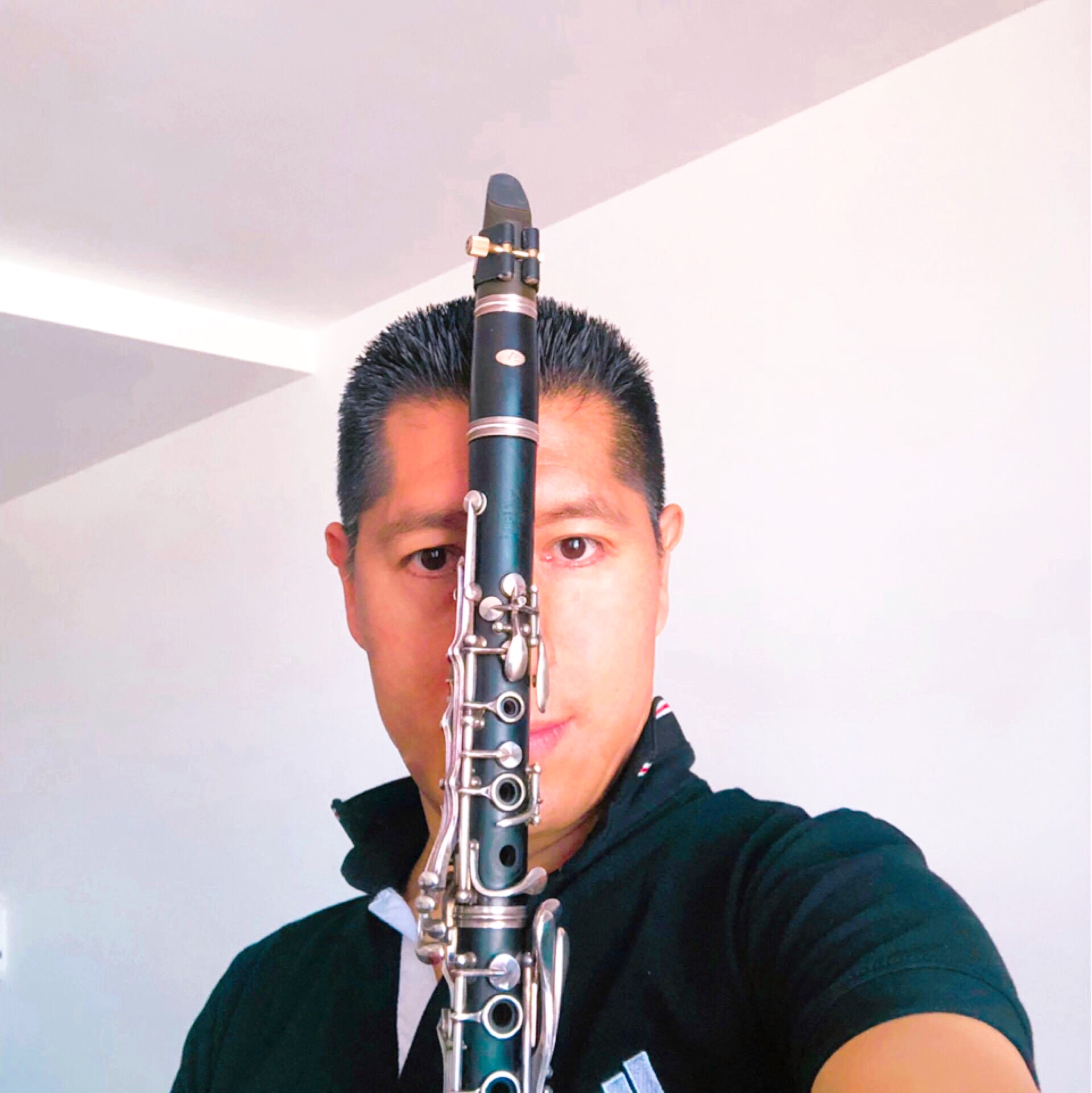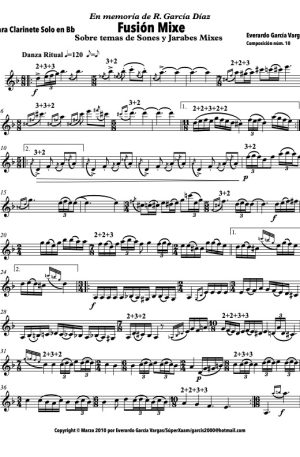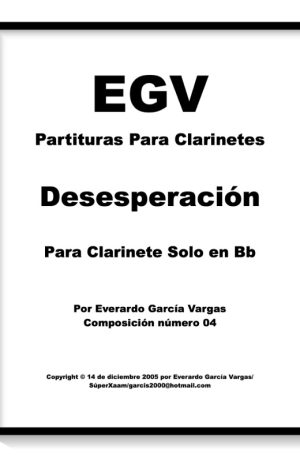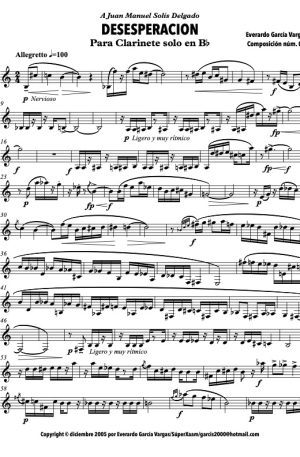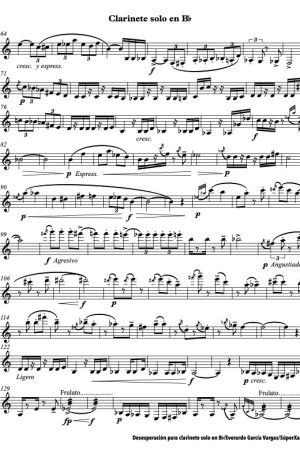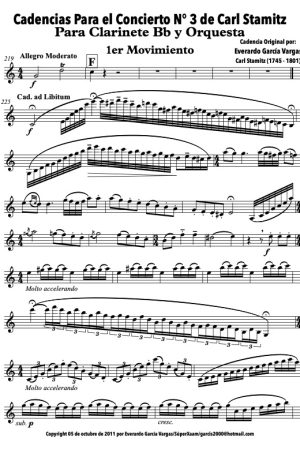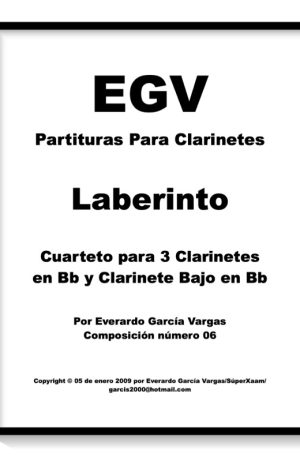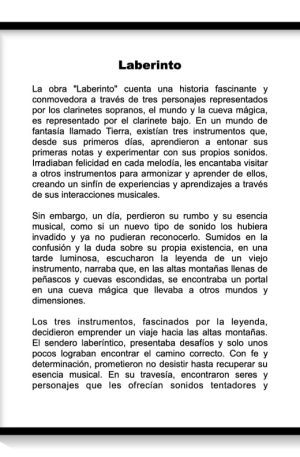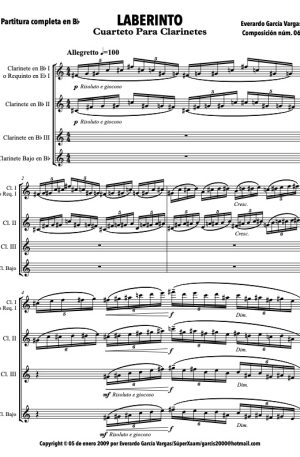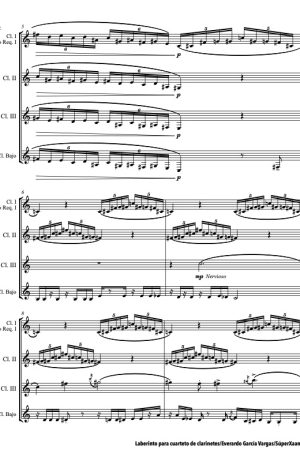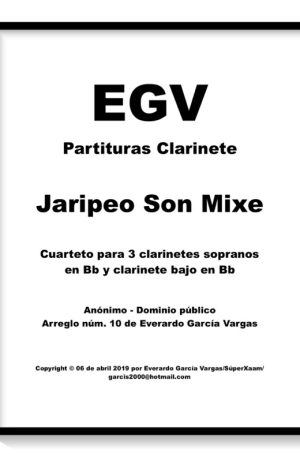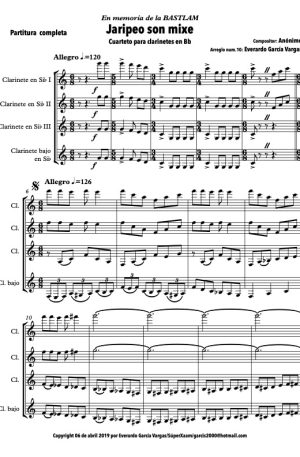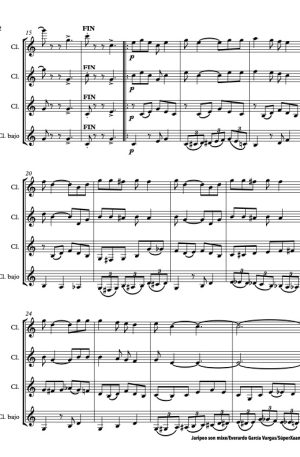No products in the cart.
JARABE MIXTECO Clarinet Quartet – Arrangement by Everardo García
$34.00
Description
JARABE MIXTECO Clarinet Quartet
The “Jarabe Mixteco” is a folk dance composed of seven sones collected from the three states of the Mexican Republic that correspond to the Mixtec region of Oaxaca, Guerrero and Puebla. It has been established as the representative dance of the Mixtec region due to the expectation and acceptance it has generated in the national and international public.
The seven sones that compose it come from the popular folklore of regional community celebrations prior to the 20th century. The dance choreographies refer to representations of animals that are part of the daily life of the Mixtec people and also symbolize the process of falling in love between couples. The authorship of the “Jarabe Mixteco” is attributed to Antonio Martínez Corro and Armando González Bolaños, the first as a musical composer and the second as the creator of the dance montage.
The “Jarabe Mixteco” was completed in 1922, the same date that it began to be danced. However, it was not until 1929 when it was presented at the Palace of Fine Arts in Mexico City. In 1934, it was performed at what was the “Racial Tribute” of Oaxaca, which would later become the “Guelaguetza” festival. It was staged by Cipriano Villa and Adela Palma.
In the “Guelaguetza”, the dance and music are performed by the delegation of Huajuapan de León. First, the “Canción Mixteca” is sung at the beginning and at the end of the dance.
The “Jarabe Mixteco” is structured by a series of seven sones and 14 steps:
- Introduction or Initial Turn: The dance begins with an invitation full of joy and boisterous movement, which invites the participants to turn to the rhythm of contagious music similar to a tarantella, but which is actually the jarabe.
- El Macho: The dancers cross each other, performing straight and crossed steps, including footwork that represents the sound that the muleteers make when imitating the hooves of the satisfied pack animals after the task.
- El Chande: The woman expresses her charms and invites the man to admire her by performing movements similar to those of the muleteers. Later, they represent a picaresque fight between a fox (the woman) and a rabbit (the man); the rabbit performs a rhythmic tapping while being chased by the fox, who corners it with her skirt.
- El Palomo: The courtship that the pigeons perform to conquer each other takes place; the couples imitate the pigeons, falling in love with their cooing. The male claims the flower that the female carries in her beak, feigning disdain at the harassment until, attracted to the dove, the male gets so close that he greedily snatches a kiss and the flower with a bold movement.
- The Aguajacado or Oaxaco: The music of the new step was brought to the Mixteca region by the natives who lived in the city of Oaxaca. This movement is danced imitating the fight between a coyote and a vulture fighting over prey; she (the vulture) makes striking skirting movements to simulate her attack and he (the coyote) defends himself and also attacks.
- The Bull: The woman manifests her dominance over the man; she takes off the large red scarf that she wears pinned to her waist and uses it to call, play with and mock the bull represented by the man, who tries to attack her.
- The Eaglet and final turn: A torrent of notes overflows the vibrant, joyful music to dance with. The couple launches into whirlwinds of movement around each other, dancing on one foot while the other shakes nervously, alternating legs with continuous dizziness that constitutes the climax and apotheosis of the dance. At the end, she falls exhausted in the arms of the man and tries to hide behind him for the kiss that has been stolen from her as a last gesture of coquetry, enclosing here the entire expression of love.

